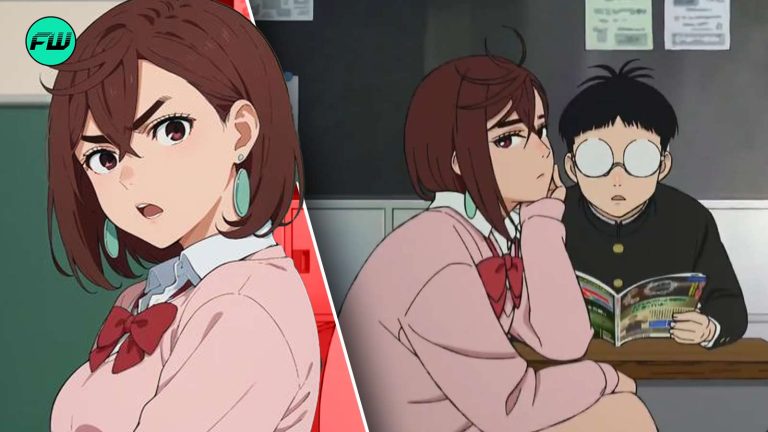Dandadan’s eccentric characters engage in absurd actions, drawing from the success of KonoSuba and Jujutsu Kaisen.

SUMMARY
Dandadan amplifies the trope of “chaotic characters” started by KonoSuba.
In some parts it overshadows emotional depth with absurdity and humor.
With all of the chracters being flawed, Dandadan feels genuine and realistic.
A lot of anime come and go, but legends never die. Why is it that some anime are always remembered and popular, even when their times are far gone? It is because they have done something unique, something right. That is why they outlast other anime with generic plots.
 Okarun and Momo with comical expressions | Credit: Science Saru
Okarun and Momo with comical expressions | Credit: Science Saru
Certain tropes become identifiers or markers of popular anime. Among the recently popular anime, there is the trope of characters engaging in absurd and seemingly ridiculous behaviors for kicks. As compared to the stoic, cold, and rational ‘perfect’ protagonist, this is a breath of fresh air for the audience.
This strategy has roots in series like KonoSuba and Jujutsu Kaisen; it has arguably reached its saturation point in Dandadan.
A Borrowed Strategy
The narrative device, while entertaining at first, now risks becoming a crutch, diminishing the creative depth expected from newer entries in the genre. The idea was first executed by the lackadaisical host of main characters in Konosuba.
 Momo Ayase eating crab in Dandadan. [Credit: Science Saru]
Momo Ayase eating crab in Dandadan. [Credit: Science Saru]
KonoSuba crafted an ensemble of eccentric characters, each with their own quirks that often led to hilariously illogical situations. It is not supposed to make sense; it is all for fun. Be it Aqua’s reckless decisions or Kazuma’s attempts at leadership, the flaws of these characters are made comedic in a nonsensical take.
In Dandadan, the trope is taken to extremes. Even when the characters are engaged in life-threatening and possibly world-ending scenarios, the raucous banter continues. The entire cast is filled with characters that would be oddballs by their lonesome.

The fierce yet weirdly idealistic romantic that is Momo, the socially awkward geek who disappears in a crowd, Okarun, the crazy Jiji, creepy Kinta, and perfectly imperfect and somewhat neurotic Aira all have clearly defined markers for comic relief.
With characters regularly engaging in bizarre and nonsensical behavior, the series leans heavily on the chaos caused by its cast’s quirks. While this often generates laughter, it sometimes feels like it overpowers the plot underneath, like Okarun’s gentle nature or Momo’s smarts.
A Comedy of Horrors
Unlike KonoSuba and Jujutsu Kaisen, which indulge in this trope lightly and the character traits serve as tools to further the plot or deepen the characters, in Dandadan, there is a risk of turning the absurd images, banter, and emotional expressions into the focal point.
 Momo, Okarun, Turbo Granny, and Seiko Ayase | Credit: Science Saru
Momo, Okarun, Turbo Granny, and Seiko Ayase | Credit: Science Saru
This approach can diverge and distract the audience from the major underlying plotlines and from the overall narrative depth, making the characters’ growth weaker due to their antics.
While the unpredictability of Dandadan is part of its charm, it risks alienating fans who crave for more detailed outlook into the serious parts of the storytelling. Overuse of character-driven absurdity can lead to diminishing the impact of discoveries. The focus is not comedy or the occult but the tale of Momo and Okarun falling in love.

The characters’ eccentricities may overshadow their emotional and relational development. For instance, Jiji’s eccentricity has marked him to be the standard comic relief character, and the impact of an emotional development-oriented story focused on him will feel strange and detached. Dandadan risks turning its carefully crafted personalities into caricatures.


